Resources

This book explores how insights into figurative language can reshape what teachers do in the classroom. It reveals why some well-known methods work while others do not. Rejecting prescriptive pedagogical formulae, it recounts classroom episodes that help teachers rethink their own practice. Finally, the book sets out how we can use these episodes to reappraise language learning theory in a way that treats it as consonant with the cognitive nature of language. (From the Publisher)

The Encyclopedia of Adult Education is the first comprehensive reference work in this important and fast-growing field, and is an invaluable resource for adult educators who research and teach in the fields of higher education, work in community-based settings, or practice in public or private organizations. Its 200 articles, written by an international team of contributors, detail the research and practice of the field from its emergence as a separate discipline to the present day, covering key concepts, issues and individuals and providing a cutting-edge summary of ongoing debates across a wide range of perspectives, from self-directed learning to human resource development. Entries are arranged A-Z and extensively cross-referenced, with detailed bibliographies for each topic to facilitate further research. (From the Publisher)
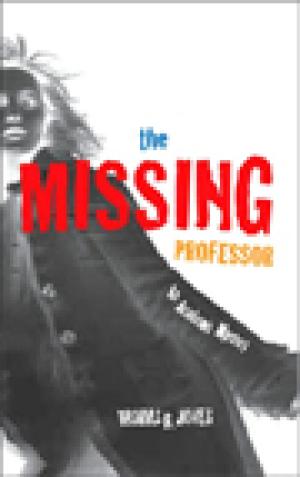
With more than a few misgivings but desperate to pay off her loans, Nicole Adams, a newly minted Ph.D. in philosophy, accepts an assistant professorship at Higher State, a small state university in "the middle of the Midwest". Little does she suspect that on just her second day, still flustered and disoriented in her new surroundings, she'll be plunged into a mystery. Crusty R. Reynolds Raskin, with whom she uneasily shares an office, disappears after his desk and files have been ransacked. The police are called. Two weeks later, with Raskin still missing, Nicole receives a threatening phone call... Read one way up, this is an entertaining parody of an academic mystery that satirizes the ways of academe. Turning the book upside down reveals another purpose: each chapter is in fact a case study, as is revealed by a series of discussion questions intended for faculty orientation and development. As the mystery unfolds, each chapter shows Nicole encountering testing situations such as student incivility and sexual harassment, problems with her first day of class, dilemmas concerning teaching evaluation and peer observation and issues related to assessment, classroom technology and the rights of faculty and students, among others. This little book can be read and used both ways: as pure entertainment or as a series of cases whose humorous presentation will break down academic barriers and promote spirited discussion. (From the Publisher)
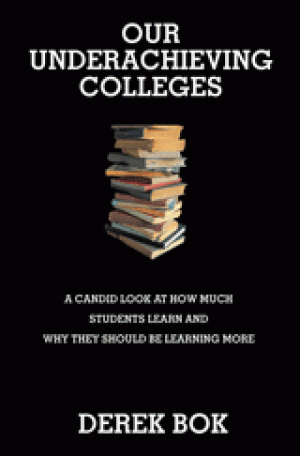
Drawing on a large body of empirical evidence, former Harvard President Derek Bok examines how much progress college students actually make toward widely accepted goals of undergraduate education. His conclusions are sobering. Although most students make gains in many important respects, they improve much less than they should in such important areas as writing, critical thinking, quantitative skills, and moral reasoning. Large majorities of college seniors do not feel that they have made substantial progress in speaking a foreign language, acquiring cultural and aesthetic interests, or learning what they need to know to become active and informed citizens. Overall, despite their vastly increased resources, more powerful technology, and hundreds of new courses, colleges cannot be confident that students are learning more than they did fifty years ago. Looking further, Bok finds that many important college courses are left to the least experienced teachers and that most professors continue to teach in ways that have proven to be less effective than other available methods. In reviewing their educational programs, however, faculties typically ignore this evidence. Instead, they spend most of their time discussing what courses to require, although the lasting impact of college will almost certainly depend much more on how the courses are taught. In his final chapter, Bok describes the changes that faculties and academic leaders can make to help students accomplish more. Without ignoring the contributions that America's colleges have made, Bok delivers a powerful critique--one that educators will ignore at their peril. (From the Publisher)
Recent decades have seen an increasing stress on the need to monitor and manage educators, and hold them to account. This article argues that, while learning outcomes can be valuable if properly used, they have been misappropriated and adopted widely at all levels within the education system to facilitate the managerial process. This has led to their distortion. The claim that they can be made precise by being written with a prescribed vocabulary of special descriptors so as to serve as objective, measurable devices for monitoring performance, is fundamentally mistaken, and they may be damaging to education when used in this way. After a brief sketch of the background to the notion of learning outcomes, arguments are presented to show their vacuity and uselessness when misused in this way, and explanations of their inadequacies are offered.
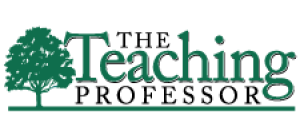
Journal Issue.
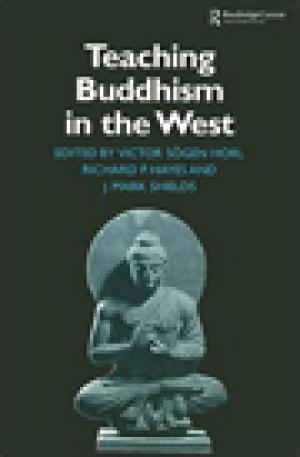
At a time when the popularity of Buddhism is at a peak in the west, both inside and outside the university setting, scholars and students alike are searching for guidance: How should Buddhism, a religion which is ultimately 'foreign' to western experience, be taught? How should one teach central Buddhist doctrines and ideas? Should one teach Buddhist practise; if so how? Until now, those interested in these and other related matters have been left with little guidance. Despite the wealth of scholarly publications on Buddhist traditions and the plethora of books about meditation and enlightenment, a serious lacuna exists in the sphere of teaching Buddhism. This book fills this lacuna, by providing a series of thematically arranged articles written by contemporary scholars of Buddhism throughout North America. Some of the major themes covered are the history of teaching Buddhism in Europe and North America (Reynolds, Prebish), the problem of representations of Buddhism in undergraduate teaching (Lewis), the problem of crossing cultural and historical divides (Jenkins), the place of the body and mind in the Buddhist classroom (Waterhouse), alternative pedagogical methods in teaching Buddhism (Wotypka, Jarow, Hori, Grimes) and the use of the Internet as a resource, and metaphor for teaching Buddhism (Fenn, Grieder). (From the Publisher)
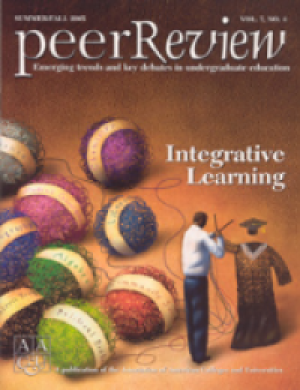
Journal Issue.

Written by national expert on assessment, Peter Ewell, this paper reflects on the challenges of general education and assessment reform in the context of recent calls for accountability in higher education. The author argues that by focusing on abilities, alignment, assessment, and action, campuses can both improve general education programs and demonstrate student achievement of learning outcomes key to success in the 21st century. This book is ideal for general education or curricular reform committees and campus discussions about assessment, general education, and accountability. (From the Publisher)